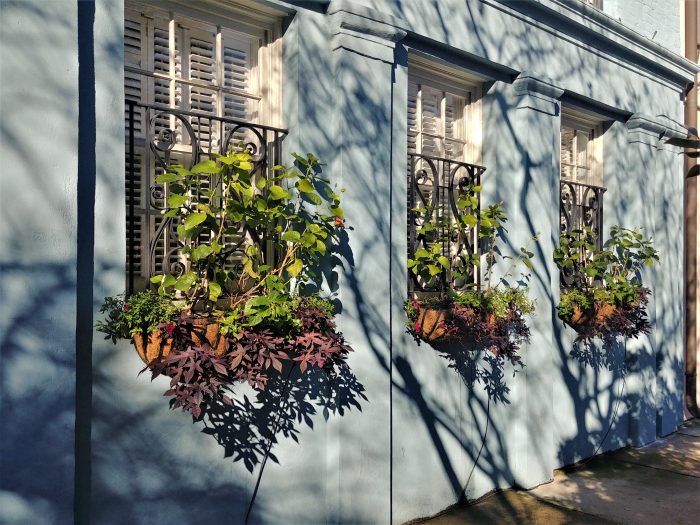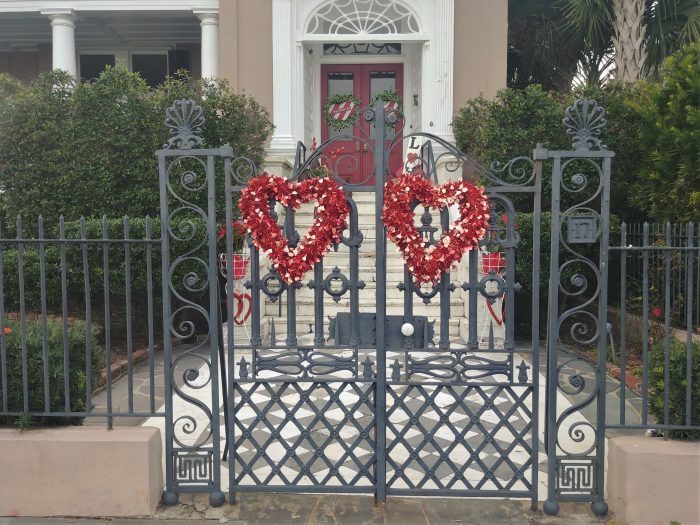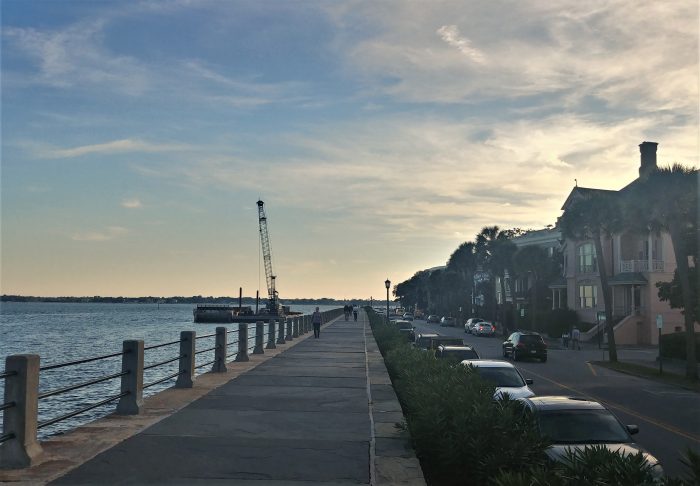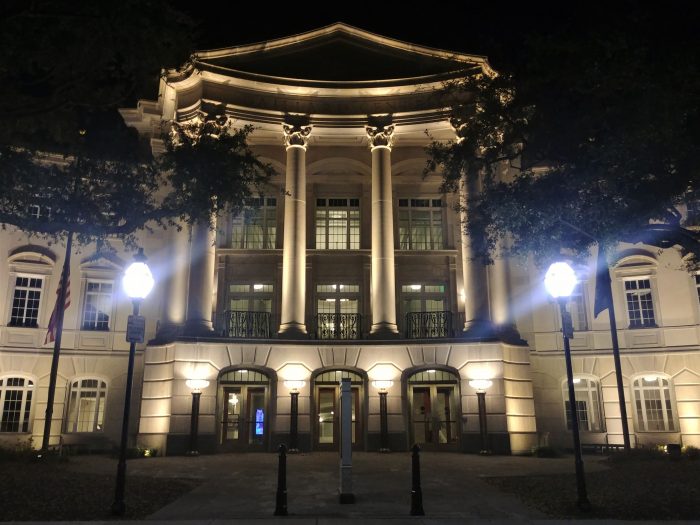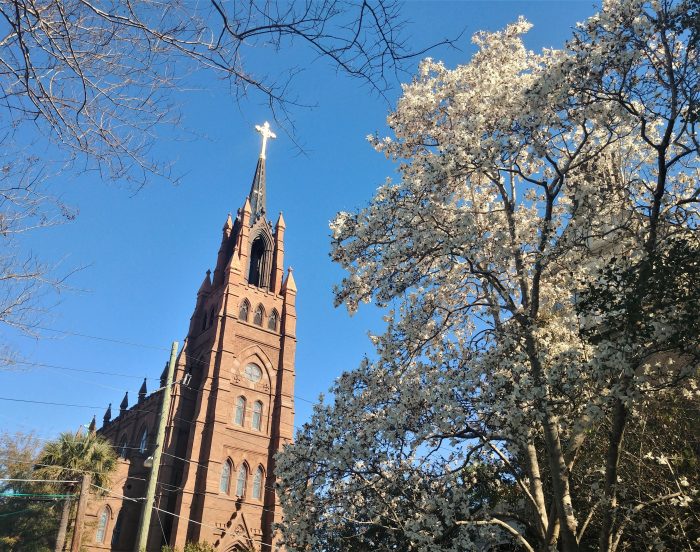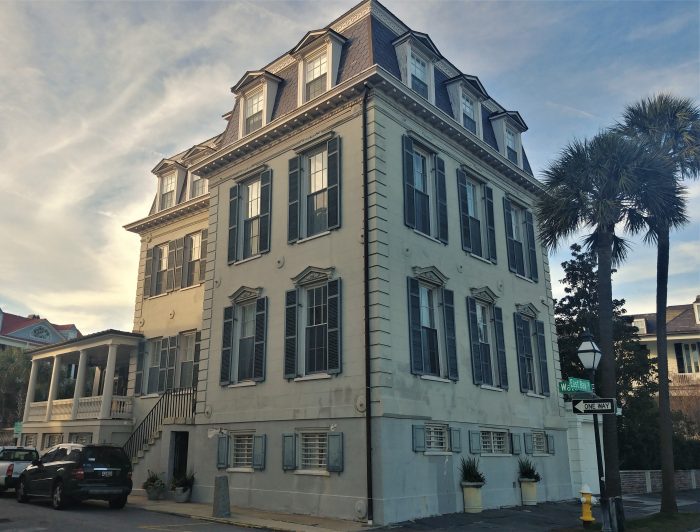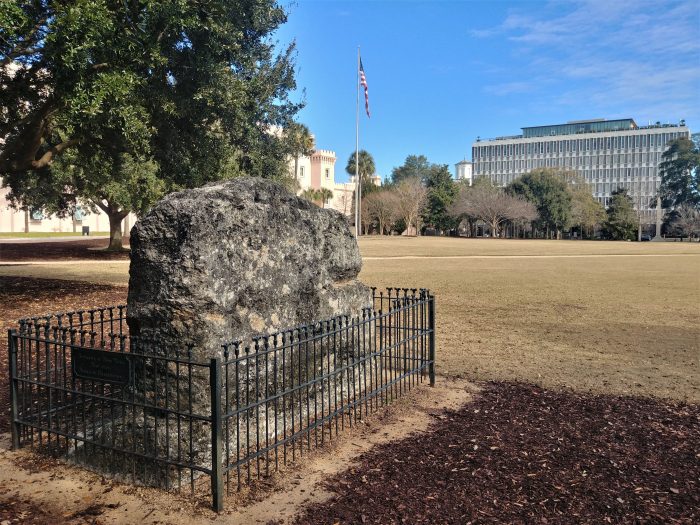This window-boxed house is a slice of Rainbow Row — the iconic stretch of Georgian houses on East Bay Street.
Happy Valentine’s Day!!
This festive house and gate on East Battery sure is in the Valentine’s Day mood.
Reflection
This beautiful window and flower box belong to 58 Meeting Street, which was built sometime before 1772. Caught in the reflection is 60 Meeting Street, across Tradd Street — which, while built in the 1740s, in recent years has been well known for dressing up in hats on certain holidays (a witch’s hat on Halloween and a Santa hat for Christmas).
Riprap
The usual view of the High Battery in the early evening is a bit different with a crane in/on the water. It is part of the $1 million effort to restore the riprap — stones that that help protect the Battery’s foundation from storm surges and other water action — that were stripped away by the remnants of Hurricane Irma. The effort consists of spreading 7,800 tons of granite rock along the Battery’s base.
Gaillard
The Charleston Gaillard Center, named after former mayor J. Palmer Gaillard Jr., is one of the premier performance arts centers in Charleston.
Blooming Charleston
Despite it being the first week of February, things are starting to bloom in Charleston. The Cathedral of St. John the Baptist is actually the second brownstone cathedral on that site. The first, the Cathedral of Saint John and Saint Finbar, was built in 1854 but burned down in 1861. The building of the new one, which was built on the foundations of the first, opened in 1907.
Water View
This gorgeous house — whose front door is on Water Street, but which is oriented to Charleston Harbor — was built by Nathaniel Ingraham in about 1818. Ingraham had previously served on the American navy ship the Bonhomme Richard, under the command of John Paul Jones (who is credited with saying, “I have not yet begun to fight).
Horn Work
This fenced-in outcropping is the last visible remnant of a Revolutionary War structure called the Horn Work. Part of Charleston’s colonial fortifications, amazingly the Horn Work was the size of Fort Sumter. An enclosed tabby fort covering over 5 acres, it had 18 cannons and was surrounded on the north side by a moat 10 yards wide.
Occupied
The Miles Brewton House, on King Street, is one of the most significant houses in Charleston and is considered to be one of the premier examples of Georgian architecture in America. Completed in 1769, it has a rich and interesting history — including having been used as the headquarters for the British army during the American Revolutionary War and the Union Army during the Civil War.
The Ashley
The Ashley River in the late afternoon. It’s a very vibrant environment full of life. While dolphin and pelican sightings are common, I recently spotted a large river otter swimming along — a sighting I haven’t had in a few years.
- « Previous Page
- 1
- …
- 73
- 74
- 75
- 76
- 77
- …
- 188
- Next Page »
